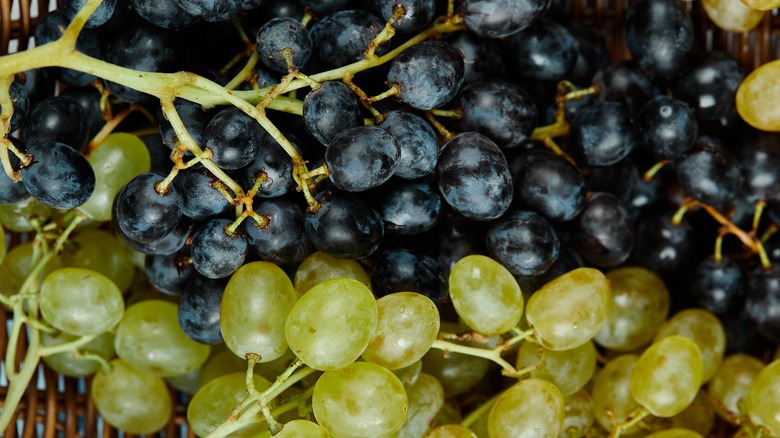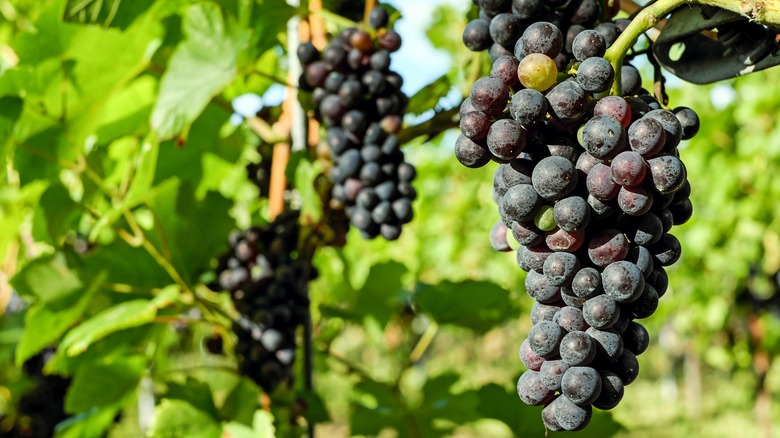Is It Okay To Eat The White Powder On Grapes?
Ever notice the light dusting of white powder, which feels like wax, that seems to settle on grapes? That's not some sort of strange dust, it's called "the bloom," says Bon Appétit's Brad Leone. According to Consumer Reports, the waxy, silvery-white residue not only covers grapes but other soft fruits like blueberries and plums, and the fresher the fruit, the more bloom. Because it wears off over time, you can tell if certain fruits have been sitting in the produce aisle too long by the amount of bloom on their skin.
Cooks Illustrated explains that this bloom is often the yeast saccharomyces cerevisiae, which is the Latin word for brewer's yeast. A by-product of this yeast is oleanolic acid (per a 2020 study in PLoS One), which is a sought-after skincare ingredient since it improves barrier function. According to Eat or Toss, it plays a similar role in fruits, trapping moisture and stunting decay.
Mother Earth News explains the yeast settles on the fruit because it's attracted to the sugar. As long as the skin doesn't break and the yeast can't access the fructose contained in the fruit's flesh, the bloom will simply sit on the skin and act as a protectant. If the skin breaks and the yeast gets into the flesh, however, a fermentation process will begin.
The bloom is safe to eat
Bon Appétit's Brad Leone knows a thing or two about bloom because he is the food magazine's resident fermentation expert, hosting "It's Alive with Brad," a show about fermented foods, on their YouTube channel. Leone says the bloom is perfectly safe to eat, calling it part of the grape's terroir, noting it adds to the grape's distinct flavor.
The bloom that collects on soft fruits is considered "wild yeast," says food anthropologist Ariana Gunderson. Wild yeast turns grapes into wine, ferments beer, and even makes a great sourdough starter. According to Pascal Baudar's book "The Wildcrafting Brewer," excerpted on Chelsea Green Publishing's website, the type of yeast that forms can transform the flavor, not to mention the alcohol content, of fermented drinks. It's also the wild yeast that brings the funk, whether in sourdough bread or natural wine.
While eating the bloom won't do you any harm, Leone cautions to make sure it's coming from organic fruit. If not, it's best to wash off the residue since pesticides, which you don't want to ingest, are likely lurking beside the wild yeast.

